The Star of Newport: Determining the identity of one of Newport’s most incredible trees.
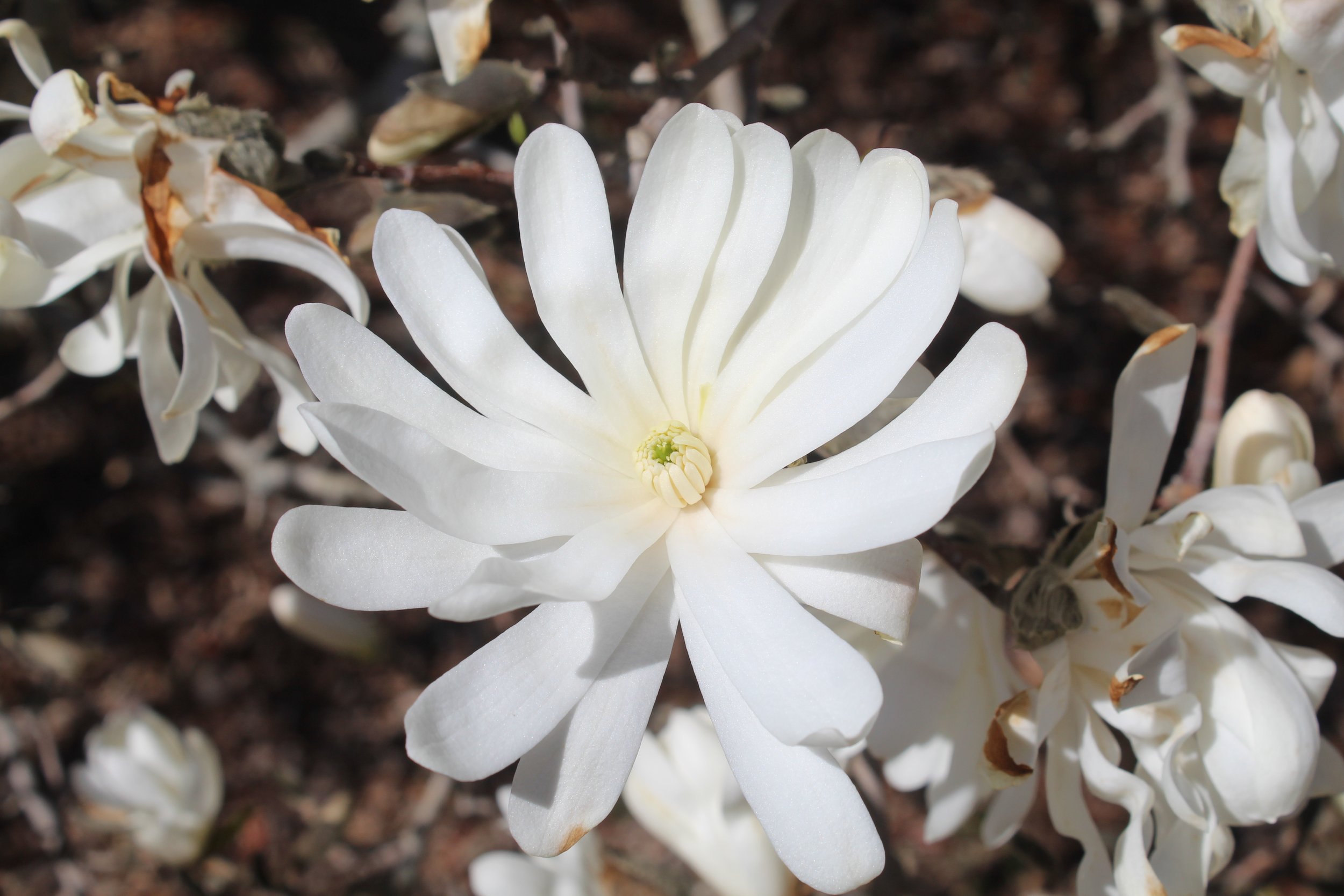
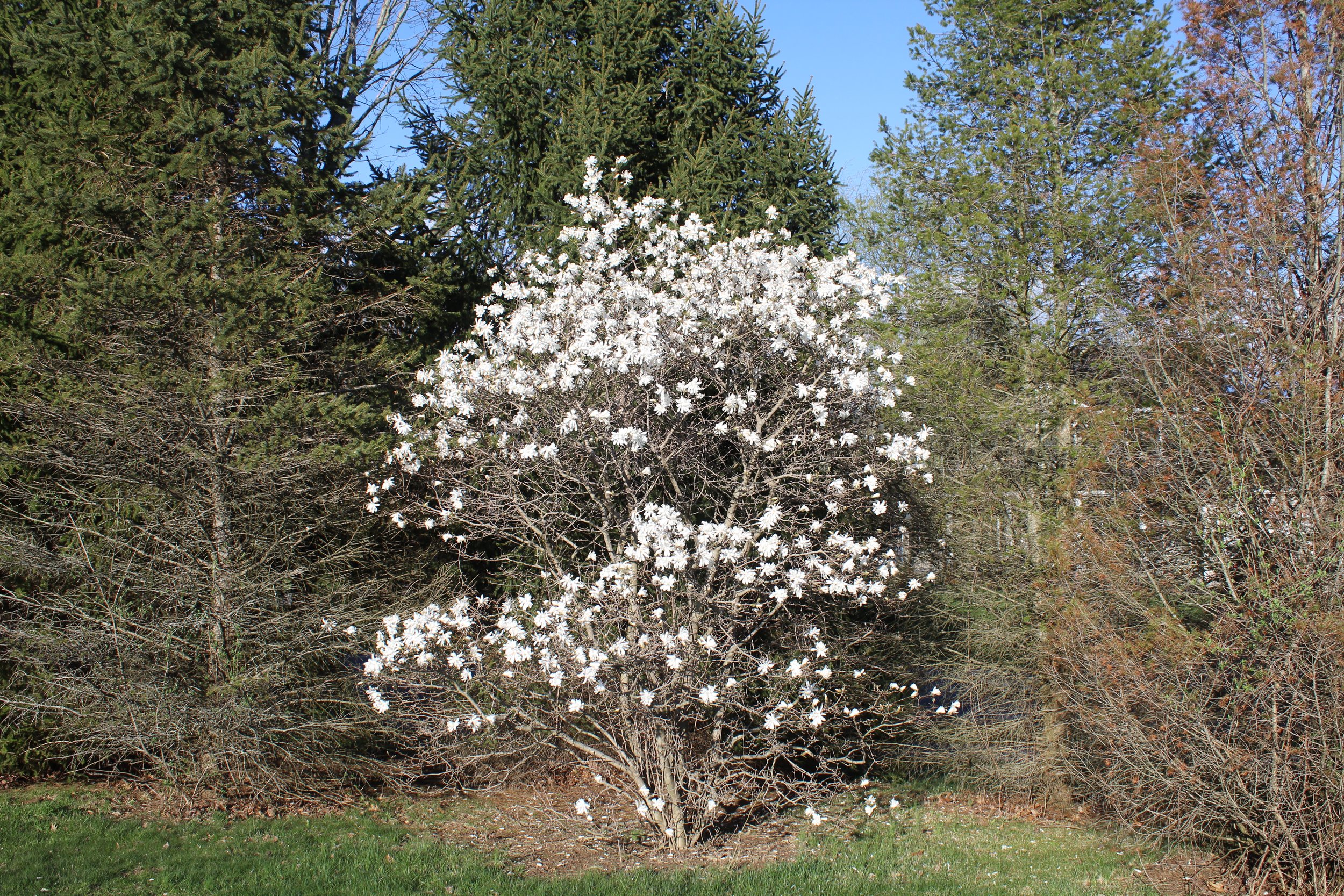

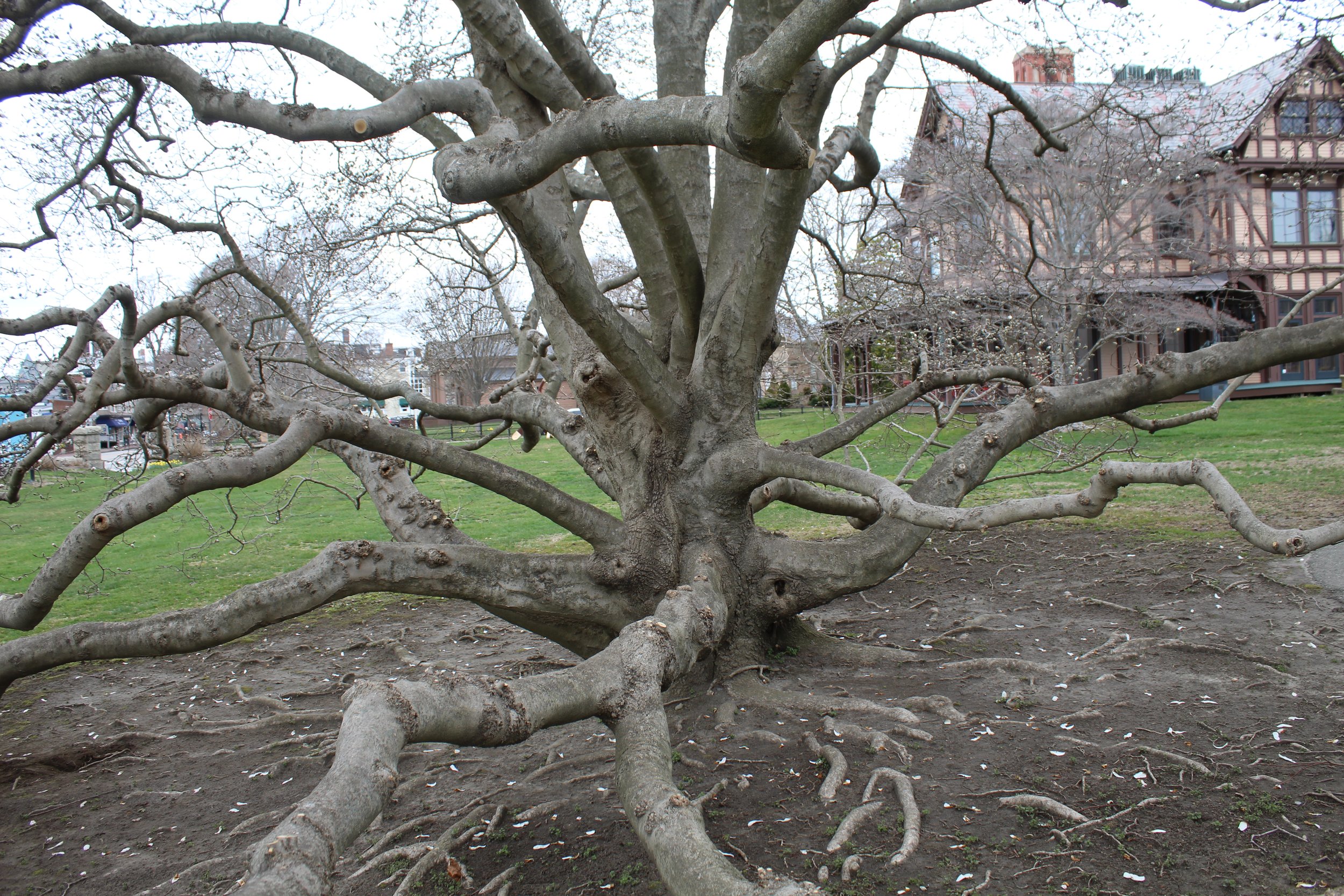
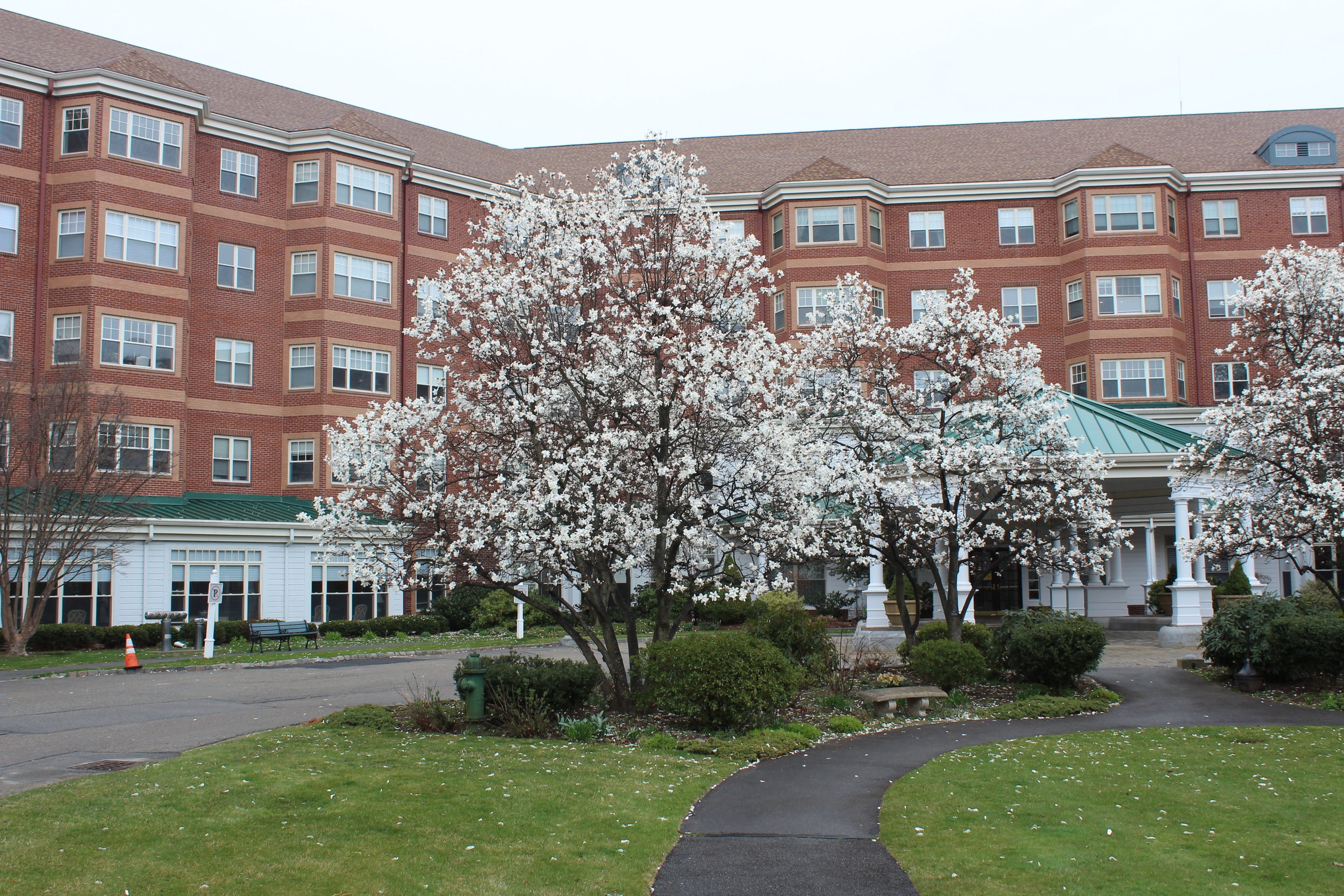
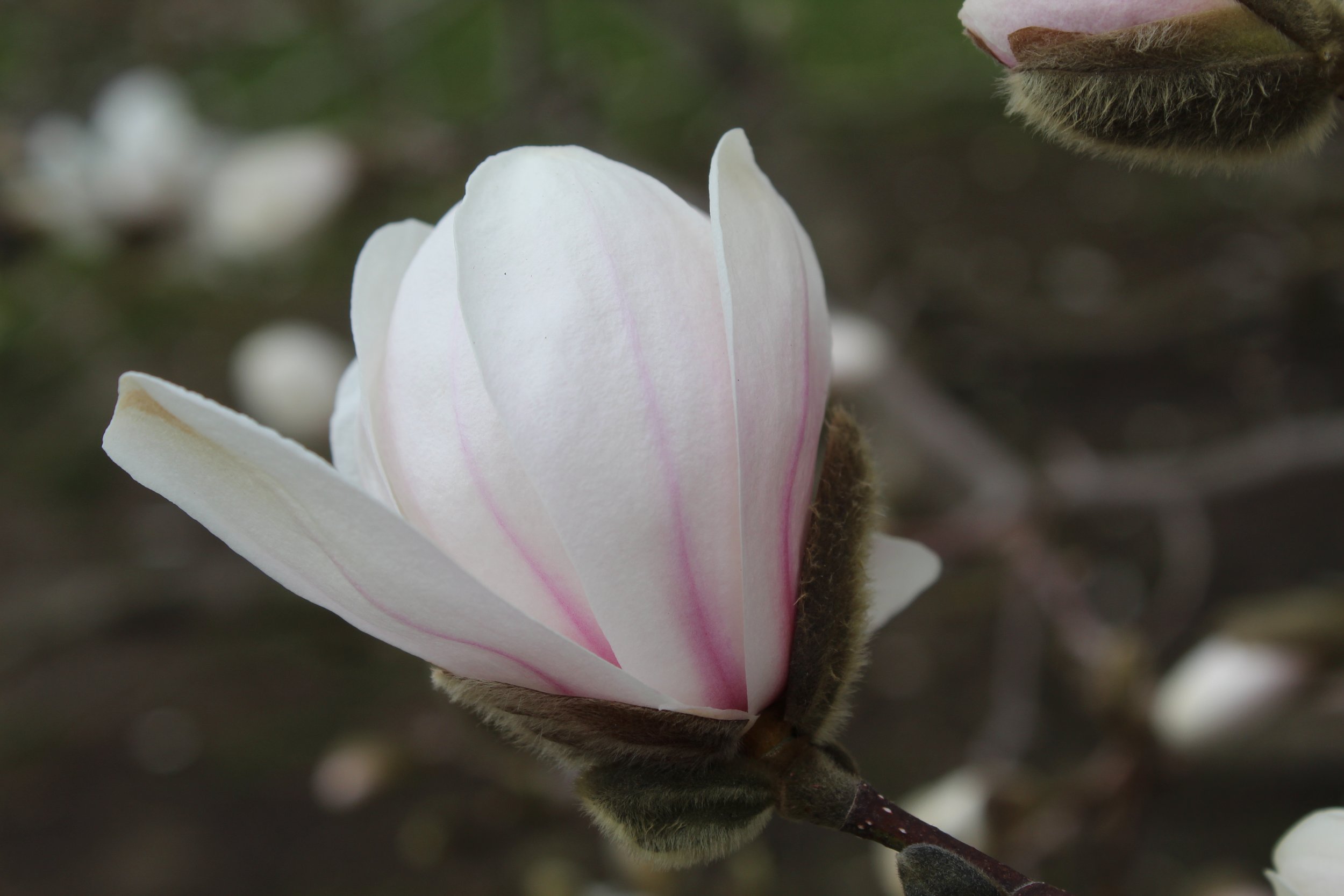
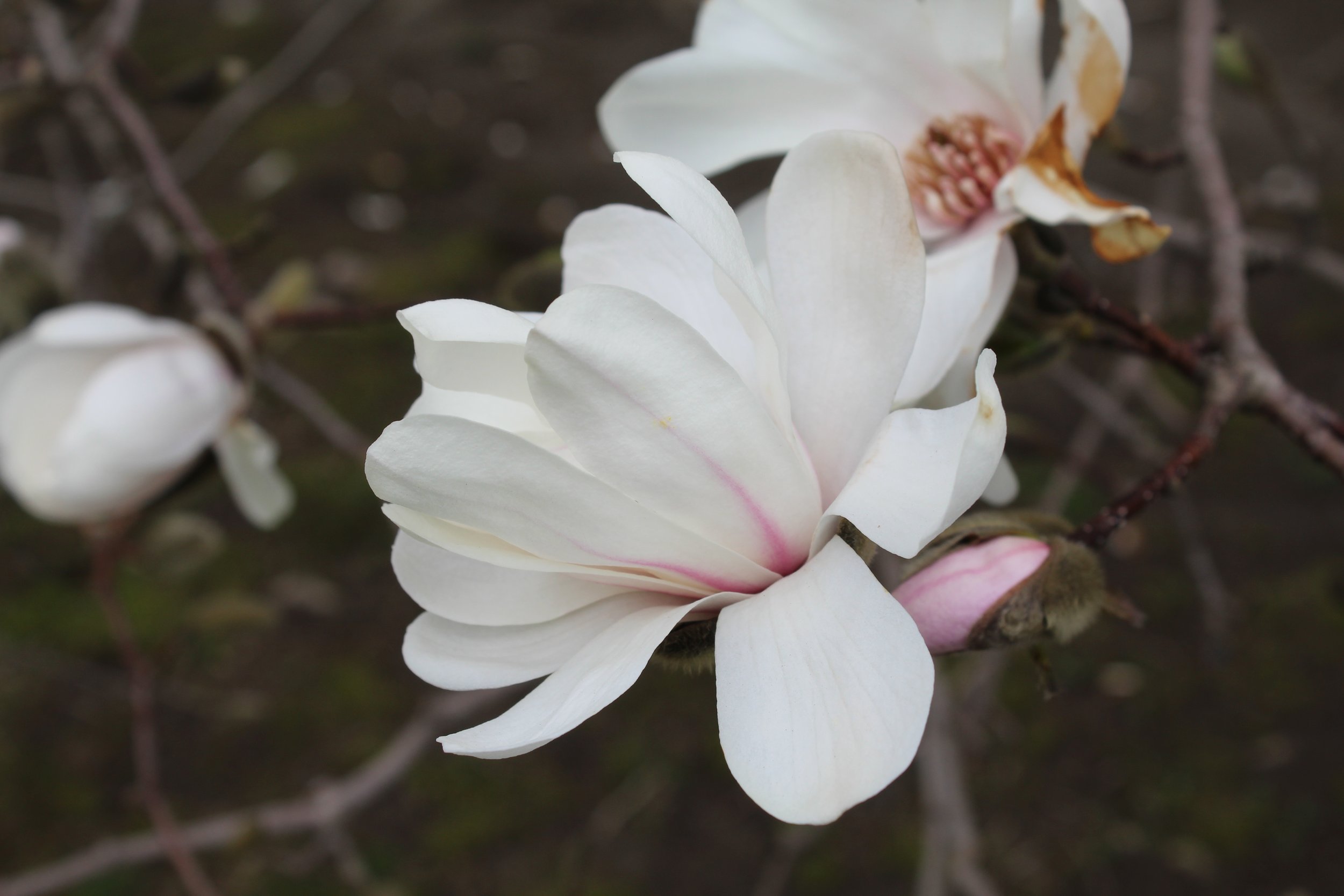
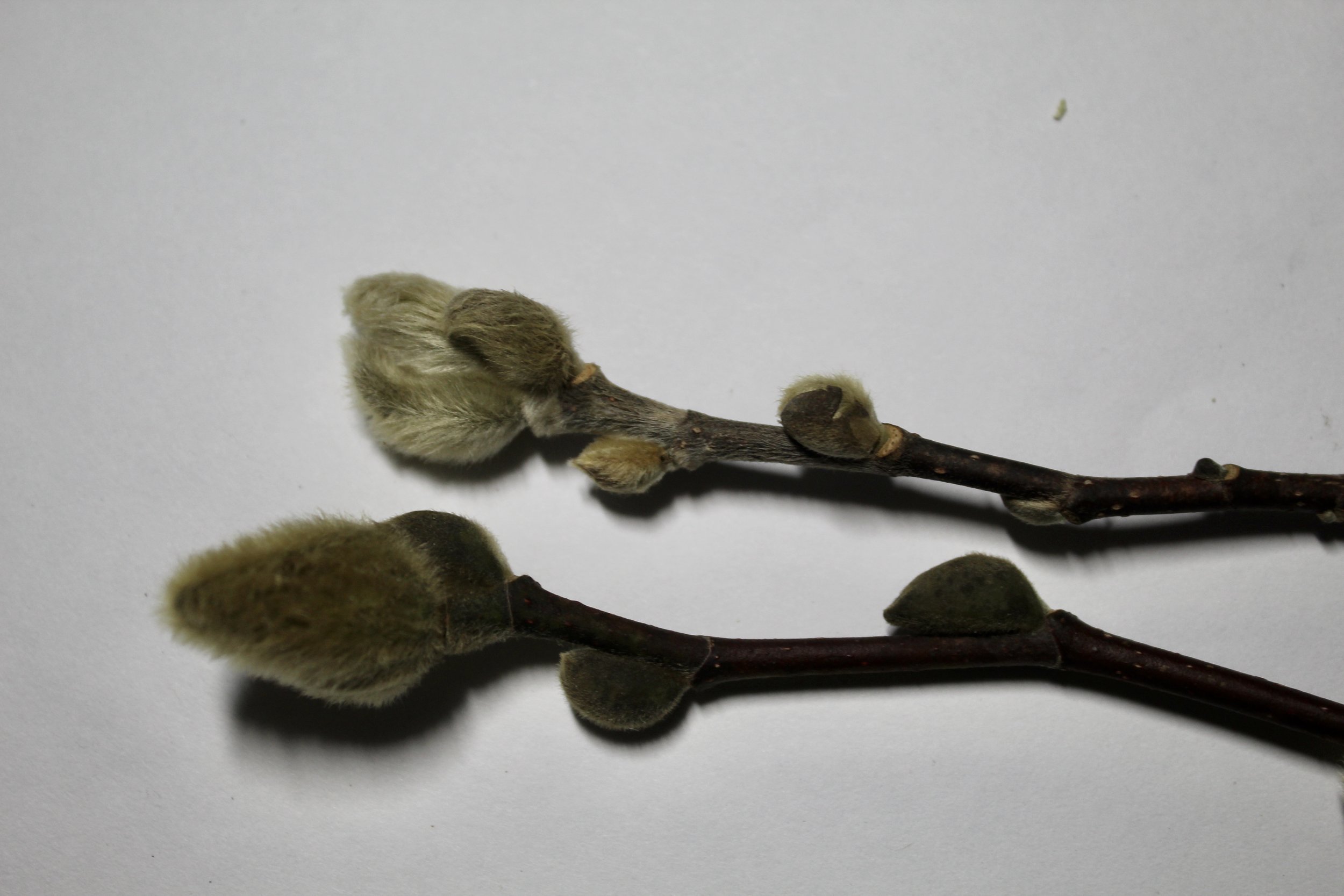
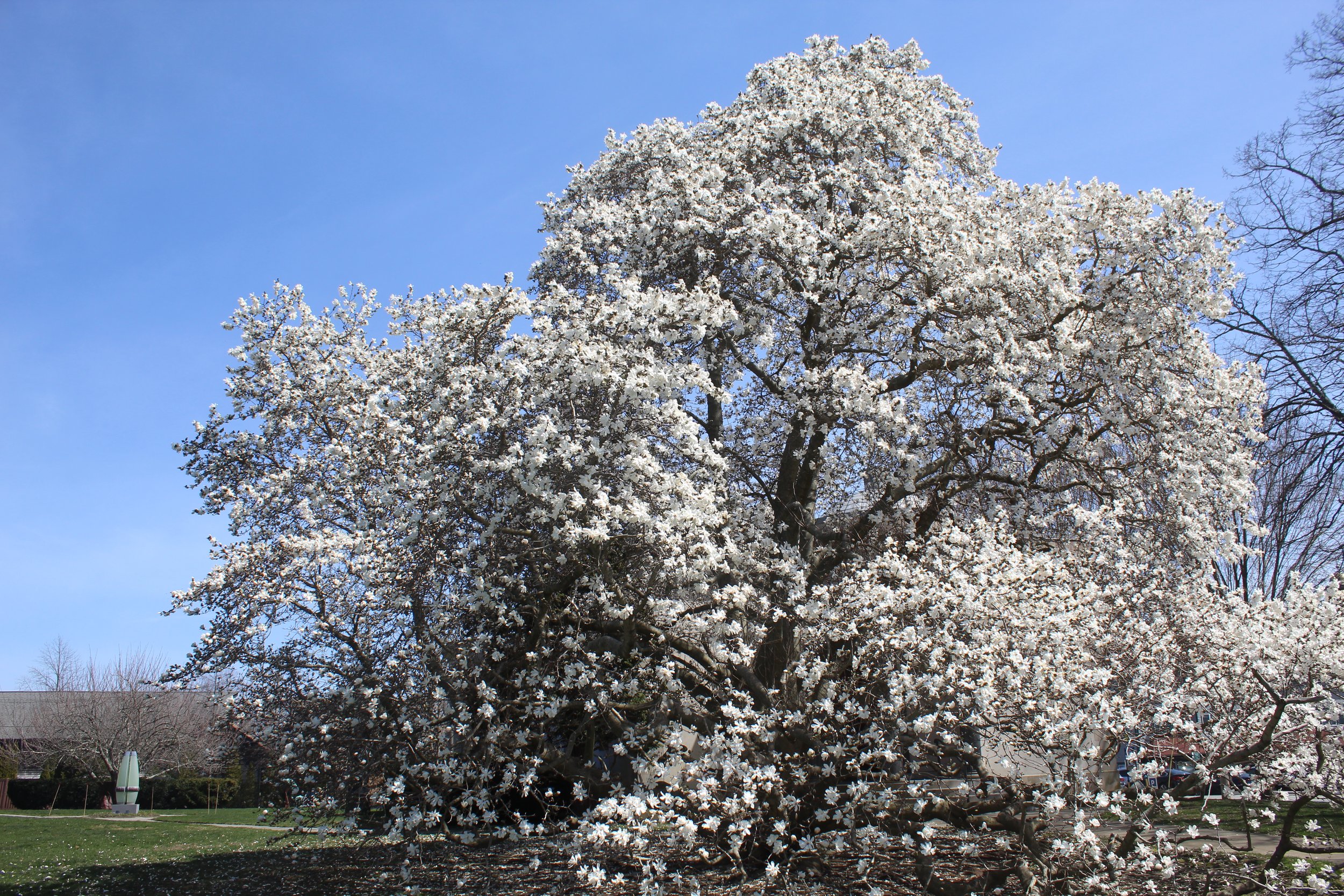
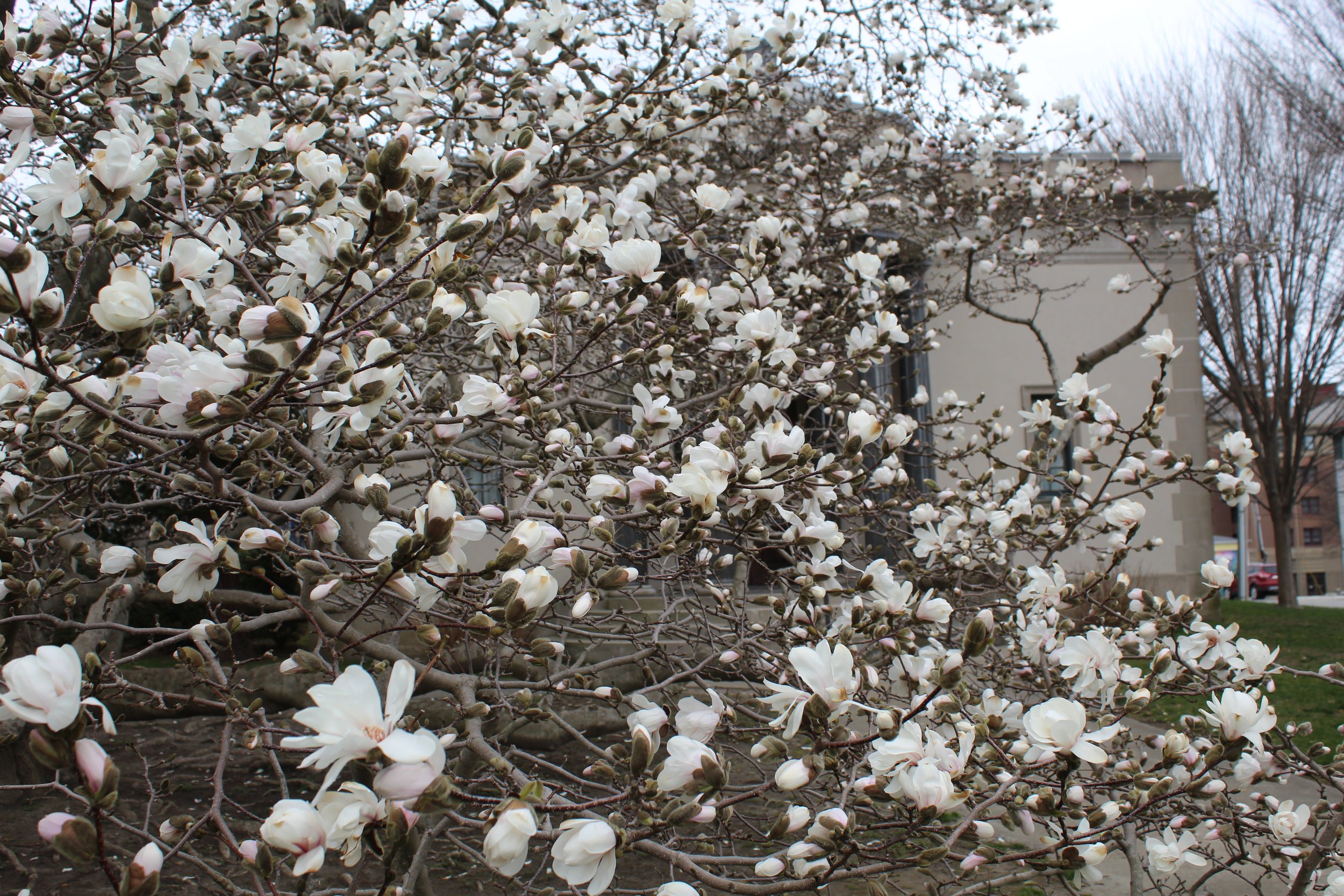
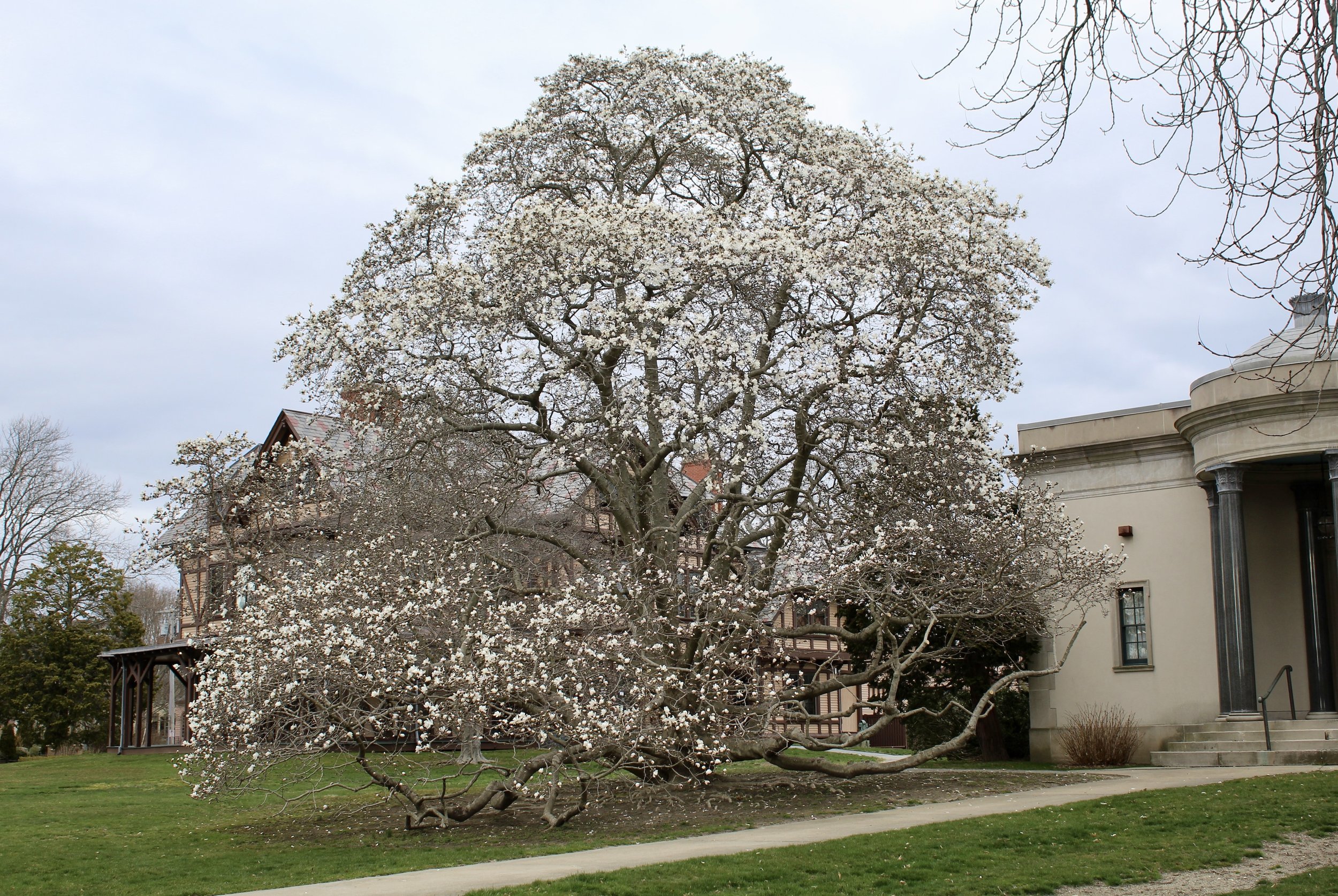
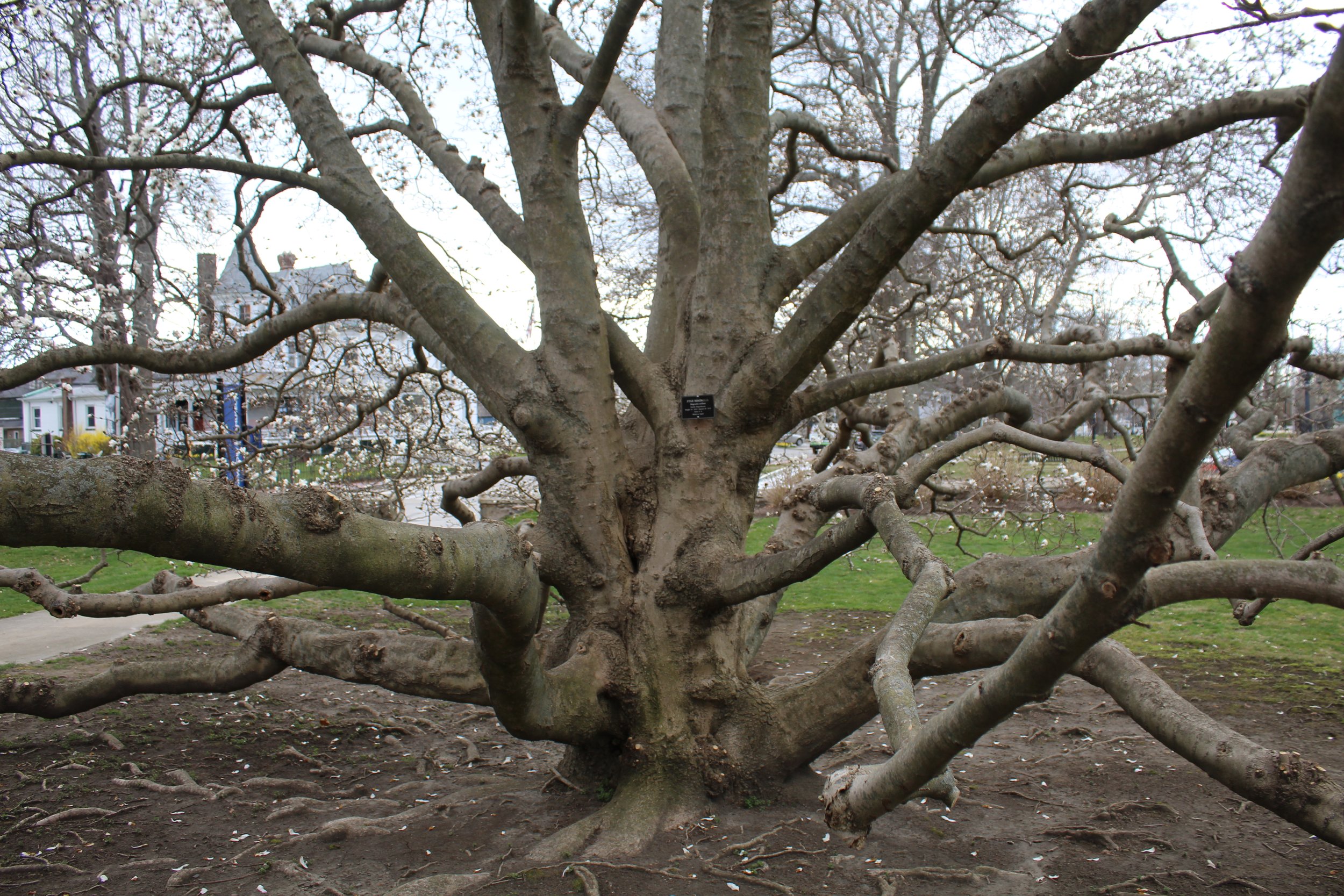
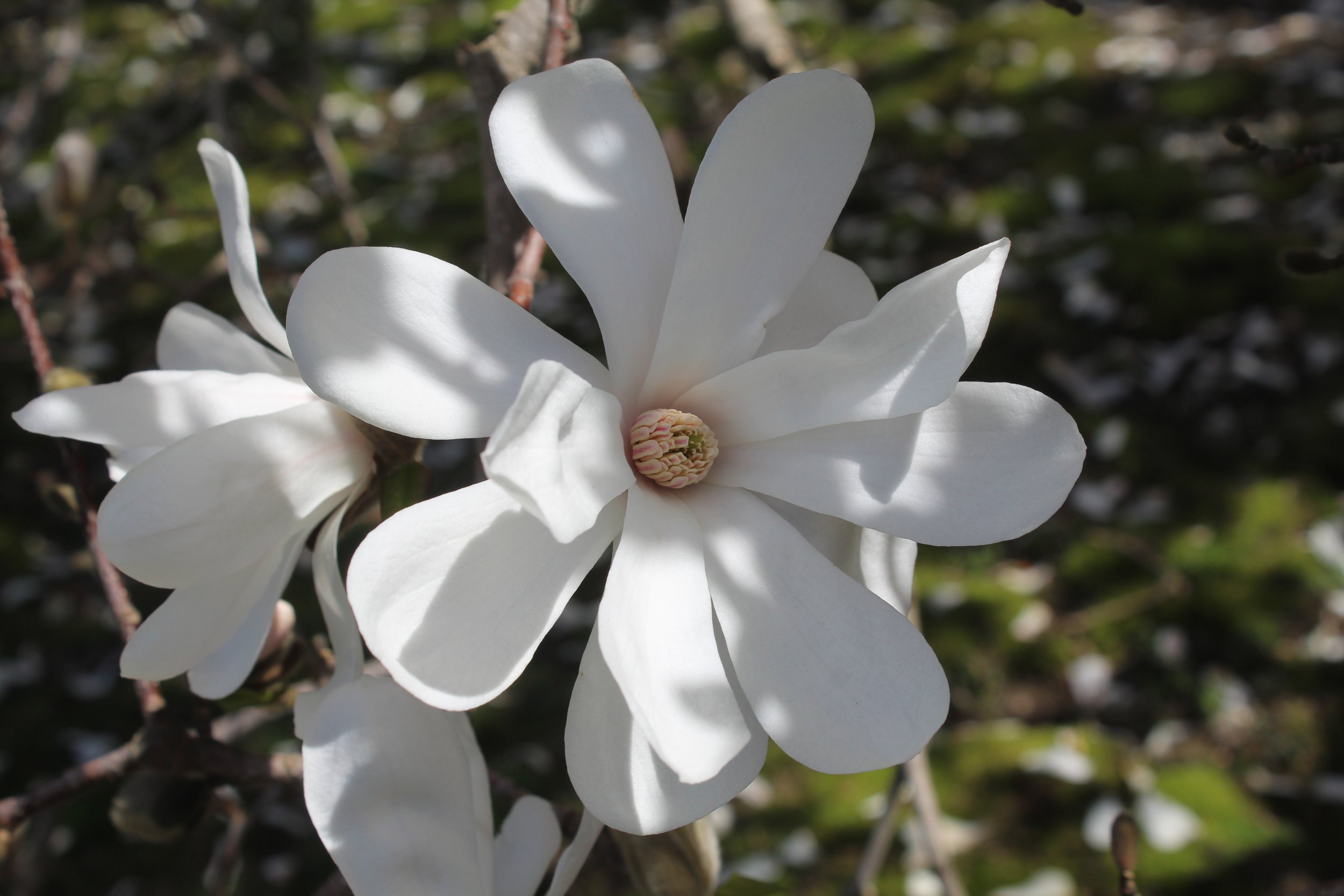
One of my absolute favorite trees in all of Newport is the exceptional magnolia planted in front of the Newport Art Museum. Every spring, it reliably produces thousands of gorgeous, fragrant flowers to broadcast the arrival of a welcomed spring. Visitors in town are impressed and enchanted, while Newport residents are reminded of just how lucky they are to live in such a beautiful place. I was very impressed when I first observed the magnolia bloom over two years ago, still being brand new to Newport and the Tree Conservancy. Much time was spent enjoying the flower’s sweet fragrance and taking photos of the blooms, the smooth bark and majestic octopus-like branching. A metal tag attached to one of the twisting branches displays the plant’s identity as a star magnolia, easily noticeable walking the path to the building. If there is one thing I’ve learned the more knowledge I acquire and the more gardens and arboretums I visit, it’s that you shouldn’t always trust a label. The more I observed the beautiful magnolia, the more I questioned the tag.
Star magnolia (Magnolia stellata) is one of the more common magnolias in Rhode Island’s landscapes. It is a small tree or large shrub, typically a multi-stemmed plant, growing 15-20 feet tall and wide, with dense branching and jagged twig growth. Abundant flowers are produced on bare stems in late March and April in Rhode Island. The fragrant blooms are milk white, often with varying degrees of rose pink on the outside base of the tepals, which are the petals of magnolia flowers. Individual tepals are long and narrow, strap-like in shape, and often number from 12 to over 50 on individual flowers, depending on the cultivar. Star magnolia is a precocious species with star-like flowers in early spring, but there are many similar species, hybrids, and numerous selections of both. While at first the plant just described may draw images of a graceful tree similar to the tree at the Newport Art Museum, it isn’t always that simple in the world of magnolias. Looking at samples and photographs of star magnolia cultivars in plant collections or literature, there are noticeable differences to the tree at the museum.
In order to better recognize and measure these differences, I called upon the help of experts. I reached out to the Magnolia Society International, an worldwide organization dedicated to the research, promotion, conservation, and enjoyment of Magnolias. While it was obvious that the magnolia at the Museum was much larger than a typical star magnolia, a close look at other characteristics would be required to pinpoint the species and cultivar. I soon received a call from Richard Figlar, the scientific advisor of M.S.I. and one of the world’s foremost experts on Magnolia. He provided me with key differences in twig characteristics of star magnolia compared to similar species such as M. kobus and M. x leobneri, most notably the presence of pubescents (hairs) on the stem and coloration of the internodes. Comparing samples from the Museum plant with known star magnolia, there were clear differences in coloration, bud size, and hairs covering the stem. The combination of characteristics more closely matched M. x loebneri.
Now that we could rule out M. stellata, I would use my pictures of the flowers to compare with other similar species and their cultivars, most notably M. x loebneri. I would use the Arnold Arboretum’s plant image database, which contains thousands of pictures of woody plants within the collections, including magnolias. It was difficult to compare flowers solely on appearance, with no quantitative data. I mostly looked at tepal size, shape, color, and number per flower. The museum magnolia produces flowers with long, broad tepals, typically numbering between 14-16 per flower. It didn’t take long to find a match however, as a very popular magnolia cultivar would rise to the surface. Tepal counts and shape, bloom period and plant habit all greatly resembled an intriguing plant affirmatively named ‘Merrill’, but the interesting history of said magnolia may answer more questions regarding its planting at the Art Museum.
‘Merrill’ originated at the Arnold Arboretum of Harvard University, raised from seed sown by a horticultural student under the guidance of then arboretum scientist and later director, Karl Sax. The original plant was accessioned in 1942, flowered for the first time in 1944, and is still extant today, located to the west of the Hunnewell building in the outstanding magnolia collection. In 1952, it was deemed extraordinary and named in honor of botanist Dr. Elmer Merrill, Arnold Arboretum director from 1935 to 1946. Merrill was an accomplished scientist who spent two decades studying the flora of the Philippines at the start of the 20th century. He is responsible for engineering plant collection efforts in central China in 1947, which resulted in the collection of dawn redwood (Metasequoia glyptostroboides) seed, which up until 1942 had only been known in the fossil record. Seed was subsequently shared with botanical institutions and growers around the world, resulting in the plant’s commonality in our gardens today.
Hybrid in origin, ‘Merrill’ is the result of a cross between the star magnolia (M. stellata) and Kobus magnolia (M. Kobus) These two closely related species were both formerly placed under M. kobus and designated as varietal forms (M. kobus var. stellata). Both native to Japan, they live in close proximity at the Arnold Arboretum. Two sources from the Arnold Arboretum providing information on this cultivar contradict each other as to whether the cross was spontaneous or a controlled cross pollination. I tend to believe the latter. There is also no indication as to which species was the male (pollen) and female (seed) parent, although that information surely exists in the Arboretum’s archives. M. x loebneri is the specific epithet designated to all magnolia hybrids that share these two parent species. The name honors Max Löbner, a German horticulturist who first successfully crossed these two species shortly before World War One. Many other cultivars of M. x Loebneri exist, including the well-known ‘Leonard Messel’ and ‘Ballerina’, and many other great magnolias.
Although ‘Merrill’ displays many intermediate characteristics of both its parent species, it is quite vigorous and is faster growing than both. That certainly explains the size of the Art Museum plant, which is over 30 feet tall and wide with long branches touching to the ground. The fragrant flowers arrive in early April, if not a little bit earlier if the weather is mild. A streak of pink is evident on the outside of the tepals, especially as the flowers are first emerging from their fuzzy perules (bud coverings). The flowers measure up to 6’’ in diameter, certainly noticeable in the landscape. ‘Merrill’ is popular in commerce and is actually often mistaken for other magnolias in the nursery trade. We received a plant recently to be planted in Morton Park under the name M. stellata ‘Royal Star’ that was in fact ‘Merrill’. In leaf, ‘Merrill’ appears very similar to M. stellata, but the leaves are perhaps larger than M. stellata, 5-6’’ long and 2’’ wide compared to 3-4’’ long and 2 wide. M x loebneri cultivars are fertile and will produce viable seed, which is great for myself as a magnolia grower.
In closing, it is a joy to be able to share this information as it brings to light a valuable and historical plant from an arboretum with longstanding ties to Newport. Plant materials from the Arnold have trickled down into Rhode Island and Newport since the early days, a tradition that continues today through the generous and giving people who know the importance of sharing plants. As one of the most important trees in town, it deserves its story to be told and its name to be recognized and appreciated. Even though it is not technically a star magnolia, it will always be a star amongst all the fantastic magnolias we cherish in our parks, yards, and anywhere else they may exist.
- Joe Verstandig, Living Collections Manager
References:
Gardiner, J M. 2000. Magnolias: A Gardener’s Guide. Timber Press, Portland, OR.
Dirr, M A. 2008. Manual of Woody Landscape Plants. 6th Ed. Stipes, Champaign, Il.
White, S L. 2014. A Magnolia with an Arboretum pedigree. Arboretum.harvard.edu
Plant Bios. ‘Merrill’ Loebner Magnolia. Arboretum.harvard.edu
